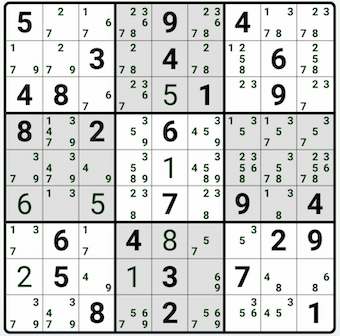Koala wrote:I hope my questions do not annoy anyone

Not at all! I would suggest posting smaller images, though. Like this:

- smaller.jpg (24.82 KiB) Viewed 1079 times
At least my computer can't even display your full grid without opening the image in a separate browser window (or saving it). That's annoying! Large image files also consume forum disk space unnecessarily. It would be even better if your app could export the grid in text format, like Leren did, because that can be directly pasted into a software solver.
Leren already answered your actual question. I have nothing to add to that, except that despite being one of the simplest basic techniques, the hidden pair is not necessarily easy to see here, so you shouldn't beat yourself too much. In fact, like all hidden subsets, it's actually easier to spot without candidates. Just look at the givens in box 6, row 4, and column 8, and you should see that there are only two cells in box 6 where 2 and 6 can go. Thus no other digit can go there. That fact combined with the 8 in r4c1 gives you a vertical pointing pair of 8s in box 6, which gives you a placement of 8 in r8c9. After that it's singles.
Somewhat ironically, the candidate view can actually make basic puzzles harder! Candidates do make it easier to see naked subsets, but they tend to have the opposite effect on hidden subsets. Here the corresponding naked subsets are pretty big (a quin in the box or a sextuplet in the row), so they're not easy to spot as such. The hidden pair is clearly simpler, but you need to hone your technique to spot it. Solving puzzles on paper and without candidates helps.

